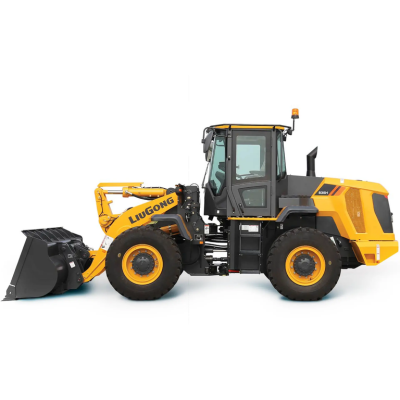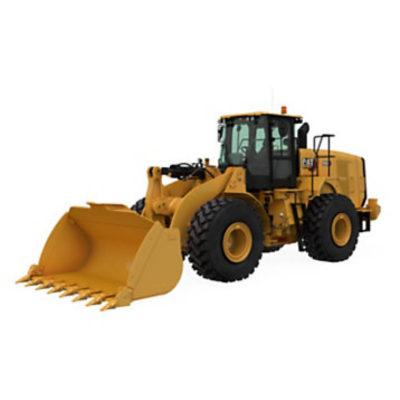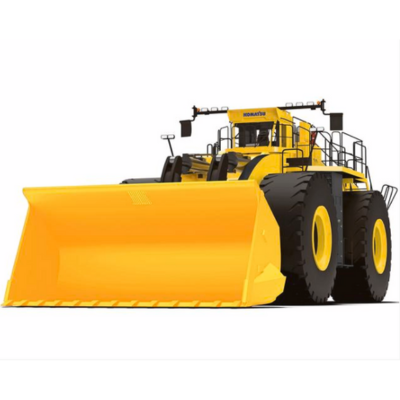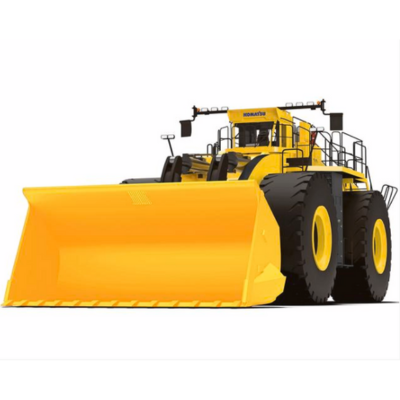944 X-Tier Wheel Loader for rent

JOHN DEERE
Specifications
Max engine power:
400 Kw
Bucket Capacities:
7.65 m3
Operating Weight:
56524 Kgs
About 944 X-Tier Wheel Loader
The revolutionary hybrid-electric drivetrain consists of the John Deere 13.5L engine, gearbox, two 3 phase Alternating Current (AC) permanent magnet generators, power electronics or inverters, four 3-phase Alternating Current (AC) Switched Reluctance (SR) motors, four 2-stage reduction final drives, and two brake resistors. The electric drive components are backed by an 8-year, 20,000 hour warranty providing peace of mind when investing in this machine.
HOW IT WORKS
The John Deere 13.5L engine which operates at either a limited engine speed range or at constant speed, like a generator set, connects to a gearbox which houses the hydraulic pumps.
The gearbox then transfers engine power to the electric generators and hydraulic pumps.
The electric generators convert rotational energy from the engine into 3-phase alternating current electrical energy
From here the power electronics, or inverter, delivers this electrical energy from the generators to the electric motors based on operator demand
The electrical motors convert the 3-phase alternating current back to rotational energy and torque into the final drives
Excess energy is passively consumed through two brake resistors that assist in maintaining reversal performance and engine over speed while coasting downhill
WHY IT MATTERS
Engines that can be run at constant speed like a generator set typically have very long life when operating over a limited speed range
When the operator lays off the accelerator pedal, changes direction, or when the loader is driven downhill, inertia and gravity can continue to drive the loader. When this happens, the electric motors are being mechanically driven by the wheels through the driveline and temporarily become generators, adding supplemental energy to the electric drive system.
This recovered energy is sent to the power electronics which can in turn now use this energy to drive the generators to assist with driving the hydraulic pumps reducing the load on the engine and allows the engine controller to send less fuel to the engine which is where the gains in fuel economy become very evident.
The power electronics is able to constantly monitor all the energy in the system and helps determine the most efficient path for this energy to go.
Recycled energy cannot be stored by the electric drive system but there is a system in place that allows the excess energy to be consumed in the form of the two brake resistors that consume extra energy and assist in braking limiting the amount of mechanical braking needed which in turn reduces brake wear and lowers maintenance costs
Frequently Asked Questions
What is the weight capacity range of the JOHN DEERE 944 X-Tier Wheel Loaders?
The JOHN DEERE 944 X-Tier Wheel Loaders have a weight capacity range of 30 to 60 tons, making them suitable for a variety of heavy-duty applications.
How can I determine the right JOHN DEERE 944 X-Tier model for my project?
To select the appropriate model, consider the specific weight requirements of your project. Choose a loader within the 30-60 ton range based on the type and volume of material you need to handle.
How can I rent a JOHN DEERE 944 X-Tier Wheel Loader through your software?
Renting a JOHN DEERE 944 X-Tier Wheel Loader is simple with our software. Navigate to the equipment rental section, select the loader model, choose your rental duration, and follow the prompts to complete the reservation process.
What maintenance and support services are provided with the rental?
Our equipment rentals include regular maintenance and support services to ensure the JOHN DEERE 944 X-Tier Wheel Loader operates at peak performance. Detailed maintenance schedules and guidelines are provided with each rental.





